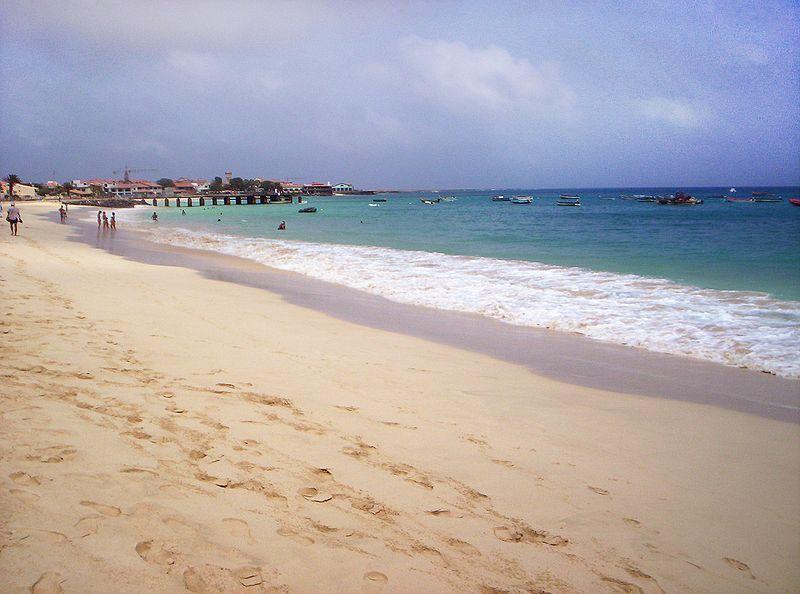DF2WO and DG9KAN will be active as D44TWO and D44KAN from Praia, Santiago Island, IOTA AF - 005, Cape Verde, Cabo Verde, 6 - 20 June 2024.
He will operate on HF Bands, CW, SSB, Digital modes and also using QO - 100 satellite.
Recent DX Spots D44TWO
D44TWO Log searchD44KAN Log searchRecent DX Spots D44KAN
QSL for D44TWO via M0OXO, OQRS.
Ads for direct QSL:
Charles Wilmott, 60 Church Hill, Royston, Barnsley, South Yorkshire. S71 4NG, England.
D44KAN via DG9KAN direct.
Santiago Cabo Verde
The West African state of Cabo Verde, nestled in the Cape Verde Islands in the Atlantic Ocean, has its main attraction, the largest island of Santiago. The large island unit has a very popular name in Europe - "Santiago", assigned to it in honor of the famous Catholic apostle St. Jago (James). As the island's name suggests, it was discovered by the ubiquitous European colonizers, who left a legacy of distinctive settlement names and landscape landmarks for their descendants.

Praia, Santiago Island, Cabo Verde, Cape Verde. D44TWO QSL.
Historical excursion
The colorful island, like presumably five others, was discovered and developed by the enterprising Genoese Antonio de Noli in 1462. The Italian Antonio, who settled there with his entire family, was expelled from Genoa for political reasons and was never able to return to his homeland for the rest of his life. De Noli was a navigator, explorer and, of course, a typical "black gold" trader. From its founding, Santiago Cabo Verde was a key seaport and thus a transshipment point for black slaves to South America and Europe. Antonio is credited with creating the first civilized city in the tropics with fortified borders, forts and a cathedral, Cidade Velha. A nobleman by birth, de Noli also became the first governor of one of the Cape Verde Islands.
After de Noli's death, the island was ruled by his daughter and son-in-law, and then possession of the profitable colony passed from one conqueror to another. Spain, France, and England took turns exploiting the ever-blooming island, invariably leaving bits of their cultural heritage behind. But the biggest influence on the mentality and way of life of this place was made by Portugal, which was the last owner of the island. Only in 1975 the independence of the whole archipelago was proclaimed, but the joking nickname of Portugal's Africa has stuck to it forever.
Fantastic geography and wonderful island climate
When viewed from a bird's eye view, Cabo Verde's necklace of 18 islands in the ocean looks like pieces of meteorite scattered across the blue sky. And the largest diamond is Santiago, a majestic 991 km2 island 620 km west of Africa. Inside the island is as impressive as outside: sharp cliffs with crater craters are interspersed with green forests, and the gentle coastline is riddled with rocky coves. The island is crowned by the highest peak with two heads - Santo Antonio, 1392 km high. The unreal mountainous relief of the island is explained by a probable seismic origin. Presumably the island was subjected to a powerful impact of paleotsunami more than 70 thousand years ago. Scientists say that the explosive wave caused the volcano Fogu, located 50 kilometers from the island, and it also threw on the territory of boulders of incredible size. Some of them reach seven hundred tons of weight!
Despite the difficult geographical position of the island, its climate is one that one can only dream of. With an average annual temperature of +26 oC, comfortable weather prevails in this area of the ocean with virtually no debilitating tropical rains. The temperature of coastal waters fluctuates in winter: from February to March from +20 to +22 oC, and in summer, from August to October, up to +26 oC. The exhausting heat, which is the hallmark of the African continent, is almost absent due to the gentle and slightly dusty south-western monsoons, which blow around the wonder island like a huge opahala.

Nature of the sunny island
The tropical nature of Santiago is estimated by experts as rather scarce due to the need to maintain agricultural fields, but this fact is more than compensated by the rich fauna of the boundless ocean. Due to the somewhat savannah climate, the island is covered with dry forests, among which can be distinguished imported pines, chestnuts, oaks, eucalyptus. Rare species of flowering shrubs - acacia albida, tamarisk, sarcostemma - very much dilute the fresh landscape of the island. But the flora of the main island of the archipelago can also boast completely unique endemic species of plantings, such as dracaena draco, or dragon tree, ironwood, tornabenea. In the National Park you can admire the oldest baobab of indescribable size, under the shade of which the first colonizers must have rested, as it is several hundred years old!
The island's fauna is also extremely scarce, but it boasts the complete absence of snakes and large mammals. But the rocky terrain is rich in birds, of which there are more than 200 species, including about 50 permanently wintering ones. Among the birds even now one can meet the rarest specimens: Borna heron, Fea petrel, Egyptian vulture. But nevertheless, the nature of the oceanic expanses allows you to see here absolutely amazing things. Flocks of humpback whales migrate around the islands every year, 18 species of dolphins frolic year-round, and several species of huge sea turtles come to breed.
Mixed population, religion, ancestral languages
235,803 people - the island's population - are the descendants of African slaves transported by Europeans and of the colonizers themselves: the French, Portuguese, and British. Over centuries of history, numerous islanders have intermingled densely through intermarriage. Today the main part of the inhabitants are Creoles - about 70%, about 30% are true Africans. 1% of the population are settled Europeans. Shouting national clothes, costume jewelry made of animal remains and civilized clothes look quite harmoniously on modern streets of ancient villages.
According to the main part of the population, the officially recognized languages of the island are Portuguese and Creole. However, during the period of interethnic communication, the islanders have developed many dialects, the most famous of which is Criulo, a rattling mixture of Portuguese and African languages, as well as Swahili.
The first European conquerors, having settled on the sunny island, of course, actively promoted Catholicism among the illiterate settlers. And thanks to this, about 90% of the inhabitants of Santiago are adherents of the Roman Catholic Church and 3% of the population - supporters of its offshoot - Protestants. But the strong African roots are ineradicable even in such an interesting community of nationalities, and 7% of the islanders still belong to sects, worship occult cultures of Africa or are religious believers.

Capital of Santiago
Praia is the largest city of the island and is coincidentally the capital of the entire Cabo Verde archipelago. The capital is an administrative unit with a population of about 150 thousand people, which is almost half of the island's inhabitants and a quarter of the entire republic. The former fishing village with a 500-year history has managed to become a well-developed economic center. Praia boasts an airport, public transportation, food processing plants, metal works and educational institutions. The main square of the capital is home to the ancient and now functioning presidential palace. The modern city is famous for its ethnographic complexes that preserve the island life of past centuries.
Sightseeing on the island
Praia, the capital of the island, is a city where, as in all ancient settlements, developed infrastructure and original monuments coexist peacefully. Modern banks made of glass and concrete and national markets full of sea delicacies and handicrafts neighbor peacefully.
The main city of the archipelago is famous for the remnants of preserved colonial life in the form of the Old Town. In the former prison building and now the Resistance Museum, you can see artifacts from the heroic past of black freedom fighters.
In Ribeira Grande, the island's first settlement, you can admire the marble pillar in the main square, the remains of the cathedral and the buildings of the old Portuguese port of Santo Felipe. Fans of natural attractions will love the National Park, located near the town of Assamada. The natural heritage of the republic with its majestic giants-trees resembles a prehistoric picture, which in contrast to the sunny sandy beaches looks just fairy-tale.
Video Praia, Santiago Island, Cabo Verde.

